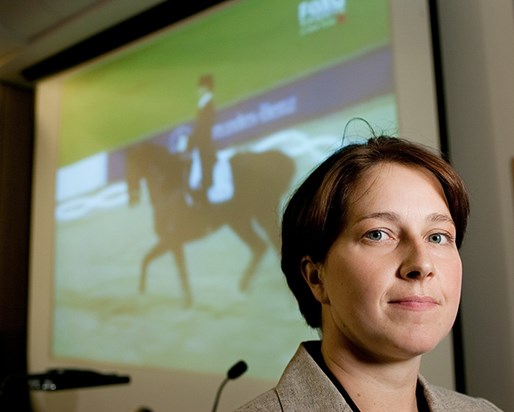Death and overproduction: the fate of Thoroughbreds?
Premature deaths, overproduction and lack of transparency taint the racehorse industry in the UK, reveal three experts. Through exclusive research into the facts and figures of the industry, the experts prove how horses are used and abused in sport.
With a population of 58 million horses worldwide, and over 1 million horses in the UK alone, the equine industry, including horse racing, is estimated to be the second most profitable sport in Britain, surpassed only by football.
Like other sports, Thoroughbred horse racing has been hit by the global financial downturn. For Thoroughbreds, a particular breed of horse known for its speed, the crisis has resulted in an increase in horse production and a drop in the number of Thoroughbreds sold.
"In sport, we are used to tennis rackets breaking and replacing the old ones with new ones, without any sense of remorse. But what happens to a horse, when it breaks?" asks Dr. Terri Byers, (CIBS) Centre for the International Business of Sport and Principal Lecturer at Coventry University.
According to Terri Byers, the main problems surrounding the use and abuse of horses for sport are overproduction and indiscriminate breeding. A large number of Thoroughbred horses are produced each year, even though only a few of these will make it to the racecourse. The surplus horses are sold for meat, not used or re-homed.
She stresses the need for better communication, open access to information, transparency, accountability and responsibility for the public to gain awareness about essential questions such as how many Thoroughbreds are bred, how many compete and how many die.
"We simply lack information on what happens to the Thoroughbred after their careers end," says Terri Byers. "Unlike the broken tennis racket, we expect a horse to have a post career life, yet many horses are terminated when injured or unable to compete."
Ground breaking research into Thoroughbred overproduction
Andrew Byers, Senior Lecturer at the School of Animal Rural and Environmental Science at Nottingham Trent University, agrees that the main problem is the surplus horses generated by the Thoroughbred industry.
He stresses that clear post racing surplus information is unavailable from the sport’s UK governing body, and as a consequence he has thoroughly researched the sparse information available in order to analyse the numbers himself.
According to Andrew Byers's research, 83,517 horses were needed for Thoroughbred racing in Britain in 2008. In 2006, these horses generated GBP 2.86 billion for the British economy overall with the direct economic impact of British racing being GBP 870 million.
"It has been suggested that surplus horses produced by the Thoroughbred industry contribute significantly to the number of unwanted horses in the UK," says Andrew Byers. "Surplus and unwanted horses are at the highest risk in regards to their welfare."
According to Andrew Byers, the annual foal production is approximately 18,500, but only "38-45 percent of the 2008 foal crop is expected to enter training," says Andrew Byers. Fewer still will actually race.
Andrew Byers estimates that the 148 horses which get re-homed annually by the four charities which are officially funded by the UK Thoroughbred Industry, represent only 4 percent of the number of horses who have not continued into racing. A large number of Thoroughbred horses are also rehomed by individuals and other charities not directly funded or aligned with the Thoroughbred industry but the question is what happens to the rest of them?
Looking into the stallion fees, which represent the fee a stud can charge for their stallions to cover a mare, Andrew Byers finds that more than half have decreased their stallion fee recently, serving to encourage production.
"This is simply not good for business or the industry as it fuels supply where there is no demand and hence devalues the product (the horse), " explains Andrew Byers.
Premature deaths a major issue
The outlook is not necessarily good for the horses that make it on to the track either says Dene Stansall, Horse Racing Consultant of Animal Aid UK, who supports the need for public awareness of the conditions of horses used for sport.
"One in 35 race horses that start the season racing will die prematurely by the end of it," says Stansall. "Last year alone, more than 180 horses died during races."
According to Stansall, the horse racing industry is dominated by "corporate and commercial empires with a vested interest in maintaining the status quo." These stakeholders include bookmakers, racecourses, breeders, owners and sponsors.
Most horses never win a race, says Stansall, and therefore earn no money for ‘keep’ costs, which on average are GBP 15,000. As a consequence, owners no longer keep their horses for good, and horses are sold-on or destroyed.
As final words of warning, Stansall says: "Any horse is vulnerable to failing the racing system."
-
christina blalock,
charlotte,
22.01.2010 08:05:
this is good information it really helped me out with my project!






